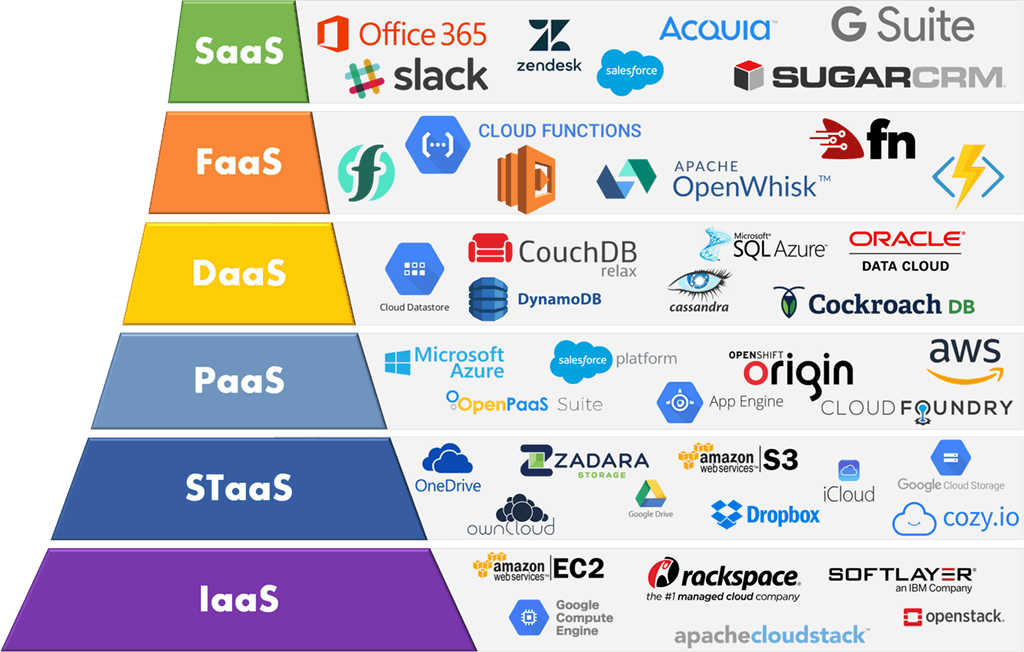Universal Cloud Service: Versatile and Scalable Solutions for every single Sector
Wiki Article
Achieve Seamless Scalability With Cloud Services
In the ever-evolving landscape of cloud solutions, attaining smooth scalability stands as a foundation for modern organizations looking for to remain versatile and competitive. The mission for smooth scalability with cloud services reveals a globe of possibilities for those willing to welcome the transformative power of dynamic source monitoring.Advantages of Cloud Scalability
Cloud scalability supplies companies the flexibility to dynamically change sources based on need, ensuring ideal performance and cost efficiency. Additionally, cloud scalability promotes advancement and testing by permitting businesses to easily test brand-new concepts and range them as needed. Inevitably, the advantages of cloud scalability prolong past price savings to encompass improved efficiency, agility, and development.Trick Functions for Scaling
Effective scaling in cloud services relies upon key attributes that make it possible for companies to readjust resources dynamically based upon demand. One crucial feature for scaling is flexibility, enabling resources to scale up or down in action to changing workloads. This makes certain that organizations can fulfill efficiency requirements without over-provisioning sources. One more key attribute is scalability, allowing systems to handle raised work by including resources seamlessly. This attribute is critical for fitting development without jeopardizing performance. Additionally, automation plays an essential role in scaling by automating the provisioning and de-provisioning of sources based upon predefined policies. Automation lowers human intervention, improves efficiency, and makes sure rapid action to transforming demands. Surveillance and analytics tools are likewise important for scaling, giving understandings right into resource utilization, performance metrics, and possible bottlenecks. These tools make it possible for organizations to make informed choices and optimize resource allocation for efficient scaling. On the whole, these vital functions jointly encourage organizations to accomplish smooth scalability in cloud services.Applying Auto-Scaling Approaches
To effectively maximize source allotment and adjust to differing work, organizations should tactically execute auto-scaling methods in their cloud services facilities. Auto-scaling permits systems to instantly change the variety of compute sources based upon real-time need. There are various auto-scaling techniques that organizations can employ, such as predictive scaling, which uses historic information to forecast future source requirements, and reactive scaling, which reacts to current work modifications.
Best Practices for Scalability
For organizations aiming to enhance their scalability in cloud services, implementing best practices is vital for ideal performance and source management. One key best practice is developing applications with a microservices architecture. This strategy breaks down applications into smaller, independent solutions that can be released, updated, and scaled individually, permitting higher adaptability and scalability.An additional vital practice is making use of containerization modern technology, such as Docker or Kubernetes. Containers make it possible for the packaging of applications and their dependences into isolated systems, making it simpler to scale parts individually and deploy them consistently throughout view it now different settings.
In addition, implementing automated implementation and infrastructure as code (IaC) can simplify scalability initiatives (linkdaddy cloud services). Automation tools like Terraform or Ansible help in provisioning and taking care of resources successfully, reducing hand-operated errors and making it possible for quick scalability
Furthermore, keeping track of efficiency metrics, establishing signals, and conducting routine ability planning are important techniques to guarantee aggressive scalability management. By sticking to these best methods, companies can achieve seamless scalability in their cloud solutions while maximizing performance and resource use.
Tracking Efficiency Metrics
When assessing the effectiveness of cloud solutions scalability, very closely keeping an eye on performance metrics is essential for making certain optimum performance and resource allotment. By constantly tracking essential efficiency indications (KPIs) such as feedback times, latency, source, and throughput use, companies can gain valuable understandings right into the health and wellness and performance of their cloud framework. Keeping track of efficiency metrics enables for the early discovery of possible traffic jams or problems that might affect scalability, allowing positive procedures to be required to resolve them prior to they escalate.

Final Thought
In conclusion, attaining seamless scalability with cloud services is important for organizations to enhance performance, improve development, and read here keep high efficiency levels during peak times. By leveraging the advantages of cloud scalability, carrying out auto-scaling methods, utilizing key features such as flexibility and automation, and complying with best methods like application style and performance surveillance, businesses can effectively scale their systems while taking full advantage of resource use and performance.The pursuit for seamless scalability with cloud solutions unveils a globe of possibilities for those willing to embrace the transformative power of vibrant resource monitoring.
Cloud scalability offers organizations click here for more the flexibility to dynamically change sources based on demand, making certain optimal performance and cost effectiveness. Another essential feature is scalability, enabling systems to deal with raised work by adding sources seamlessly.For organizations intending to enhance their scalability in cloud solutions, executing ideal practices is critical for ideal efficiency and resource administration.When assessing the effectiveness of cloud solutions scalability, very closely keeping an eye on efficiency metrics is crucial for making sure ideal capability and source allotment.
Report this wiki page